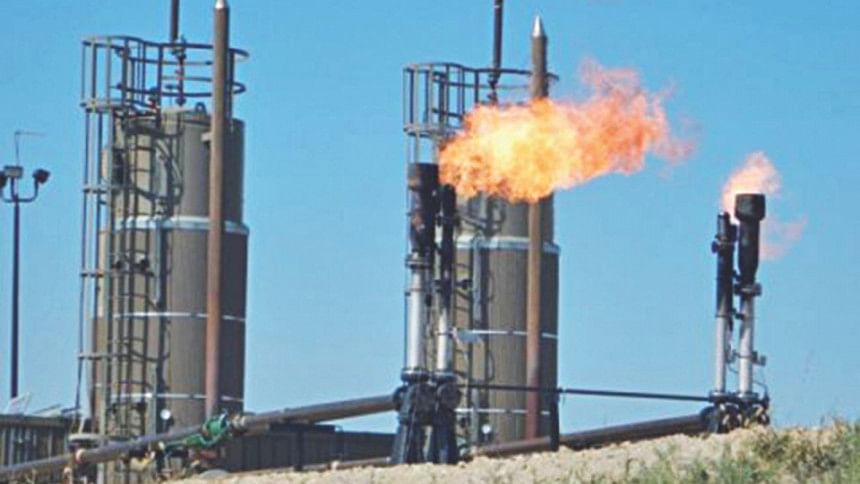One in 5 deaths globally:study

More than 8.7 million people died in 2018 from fossil fuel pollution, significantly higher than previous reports suggested, researchers said yesterday.
This accounts for nearly 20 percent of adult mortality worldwide, said researchers from Harvard University, who collaborated with the universities of Birmingham, Leicester and the University College London.
The researchers estimated that exposure to particulate matter (PM 2.5) from fossil fuel emissions accounted for 18 percent of total global deaths in 2018, a little less than 1 out of 5.
Half of that was split across China and India, with another million deaths equally distributed among Bangladesh, Indonesia, Japan and the United States, they reported in the journal Environmental Research.
According to Sydney Morning Herald, a quarter of all deaths in China were caused by fossil fuel pollution (representing 2.3 million people), rising to 30 percent in India and 35 percent in Bangladesh, the highest percentage in the study.
The Daily Star, however, could not independently verify the claims.
The toxic cocktail of tiny particles cast off by burning oil, gas and especially coal was responsible for a quarter or more of the mortality in half a dozen nations in Asia.
"We often discuss the dangers of fossil fuel combustion in the context of CO2 and climate change and overlook the potential health impacts," co-author Joel Schwartz, a professor of environmental epidemiology at the Harvard TH Chan School of Public Health, said in a statement.
The potential to avoid millions of premature deaths should be a powerful additional incentive for policymakers to drive down greenhouse gas emissions and hasten the global shift from brown to green energy, he said.
Worldwide, air pollution shortens lives by more than two years on average, earlier research has shown.
Worst-hit is Asia, where average lifespan is cut 4.1 years in China, 3.9 years in India, and 3.8 years in Pakistan. In some regions of these countries, life expectancy is reduced by twice as much.
In Europe, it is shortened by eight months on average.
The study estimated that on average fossil fuels caused deaths of adults aged 14 and over at 30.7 percent in Eastern Asia; in Europe 16.8, Canada 13.6, USA 13.1, Central America and the Caribbean 8.2, South America 7.8, Western Asia and the Middle East 6.5, Africa 3.7 and Australia and Oceania 3.2.
The new study nearly doubles previous estimates of the number of people killed by fossil fuel pollution.
The World Health Organisation says that air pollution -- including indoors -- kills seven million people a year, with 4.2 million of those deaths due to ambient, or outdoor, pollution.
The most recent Global Burden of Disease study -- the most comprehensive catalogue of why people die -- advances roughly the same numbers.
Both of these estimates relied on satellite data and surface observations to determine concentrations of the smallest -- and most deadly -- calibre of pollution, known as PM2.5.
But they cannot determine whether these microparticles come from burning fossil fuels or, say, dust and wildfire smoke, according to co-author Loretta Mickley, an expert in chemistry-climate interactions at Harvard.
"With satellite data, you're seeing only pieces of the puzzle," she said.
For decades scientists have known airborne particles are a danger to public health, but there have been a few epidemiological studies to quantify the effects of very high levels of exposure, like in India and China.
This new research deploys a more detailed analysis of the impact of sooty airborne particles thrown out by power plants, cars, trucks and other sources.
To get a more fine-grained picture of where particle pollution comes from and its health impacts, Mickley and colleagues used a 3D model of atmospheric chemistry, known as GEOS-Chem, that divides Earth's surface into 50-by-60-kilometre blocks.
"Rather than rely on averages spread across large regions, we wanted to map where the pollution is and where people live," said lead author Karn Vohra, a graduate student at the University of Birmingham.
The next step was to plug in data on carbon emissions -- from the power sector, industry, shipping, aviation and ground transport -- along with NASA simulations of air circulation.
Once the researchers had PM2.5 concentrations for each box in the global grid, they still needed to determine the consequences for health.
Previous calculations of air pollution impacts -- based on exposure to indoor second-hand smoke -- seriously underestimate the danger, recent studies have found, so the researchers developed a new risk assessment model.
Compared with other causes of premature death, air pollution kills 19 times more people each year than malaria, nine times more than HIV/AIDS, and three times more than alcohol.
The death toll exceeds the combined total of people who die globally each year from smoking tobacco plus those who die of malaria.
Without fossil fuel emission, the average life expectancy of the world's population would increase by more than a year, while global economic and health costs would fall by about $2.9tn.

 For all latest news, follow The Daily Star's Google News channel.
For all latest news, follow The Daily Star's Google News channel. 



Comments